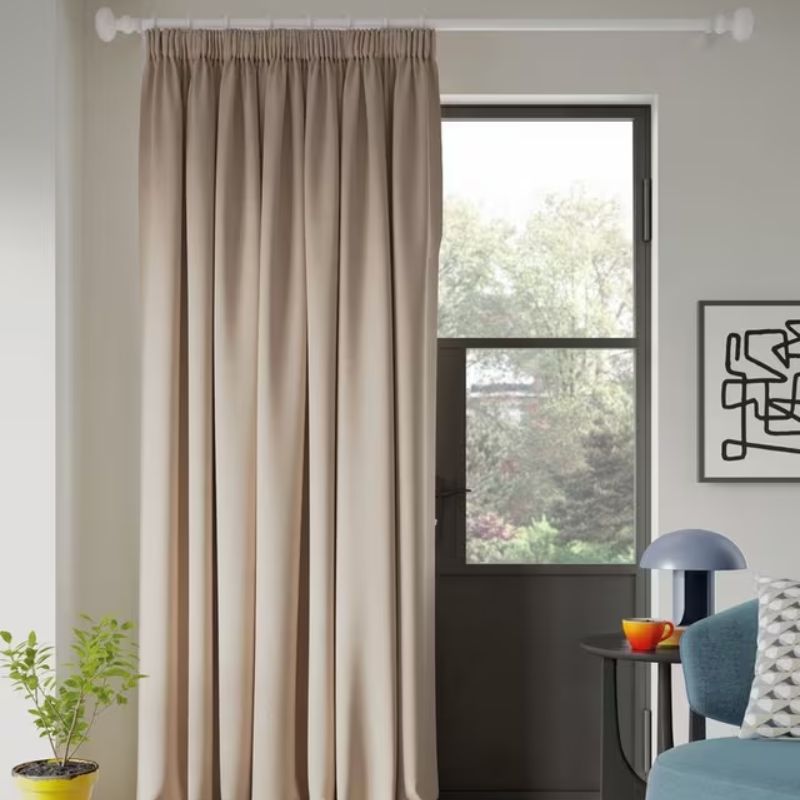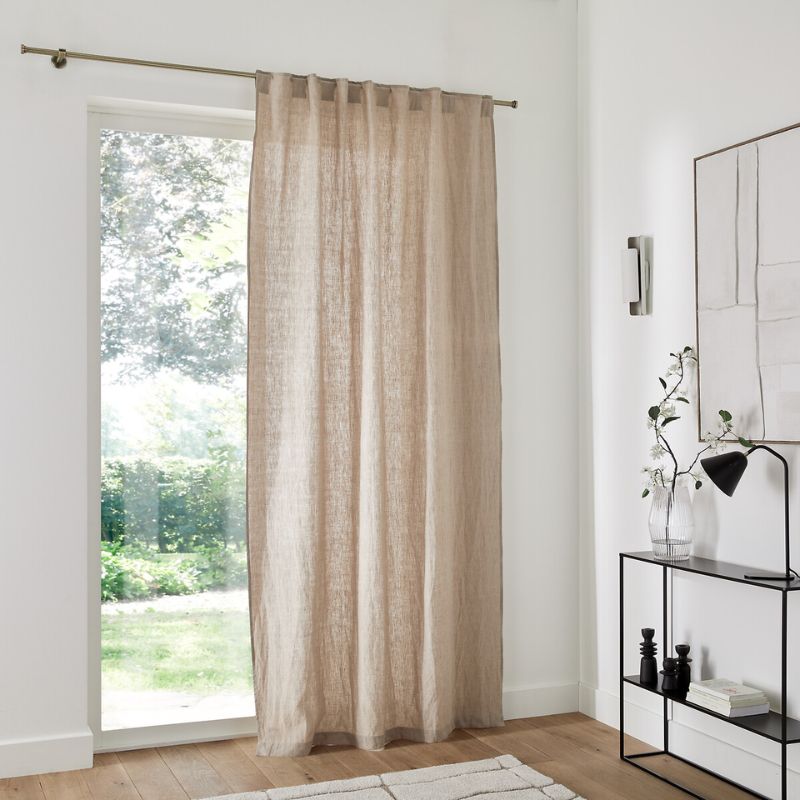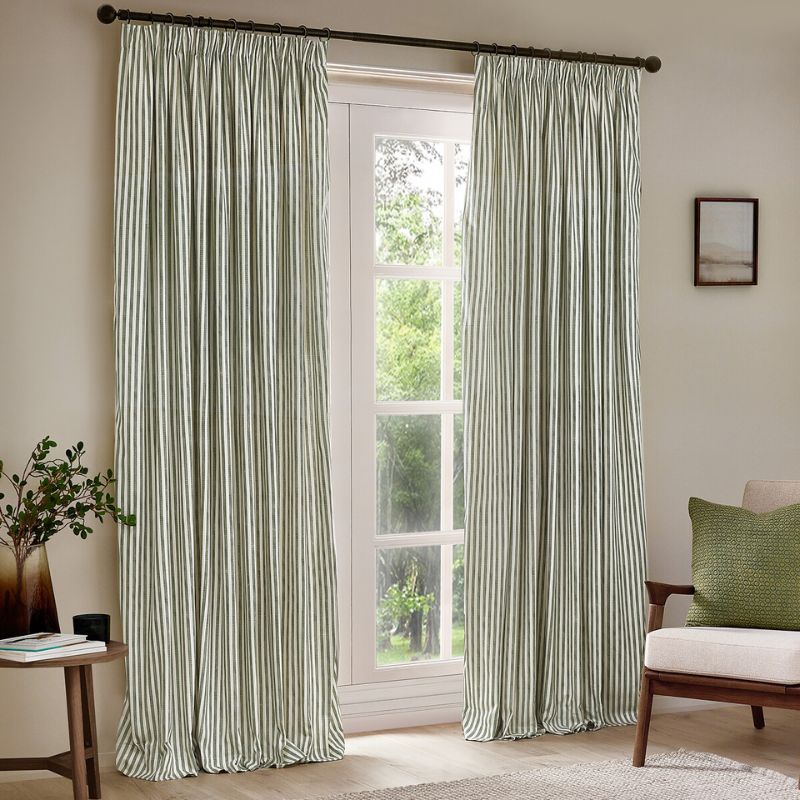10 Cool, Contemporary Window Treatments for Sliding Glass Doors That Work With the Architecture, Rather Than Just Covering It
From light-filtering blinds to linen curtains, interior designers share their favorite window treatments for sliding glass doors

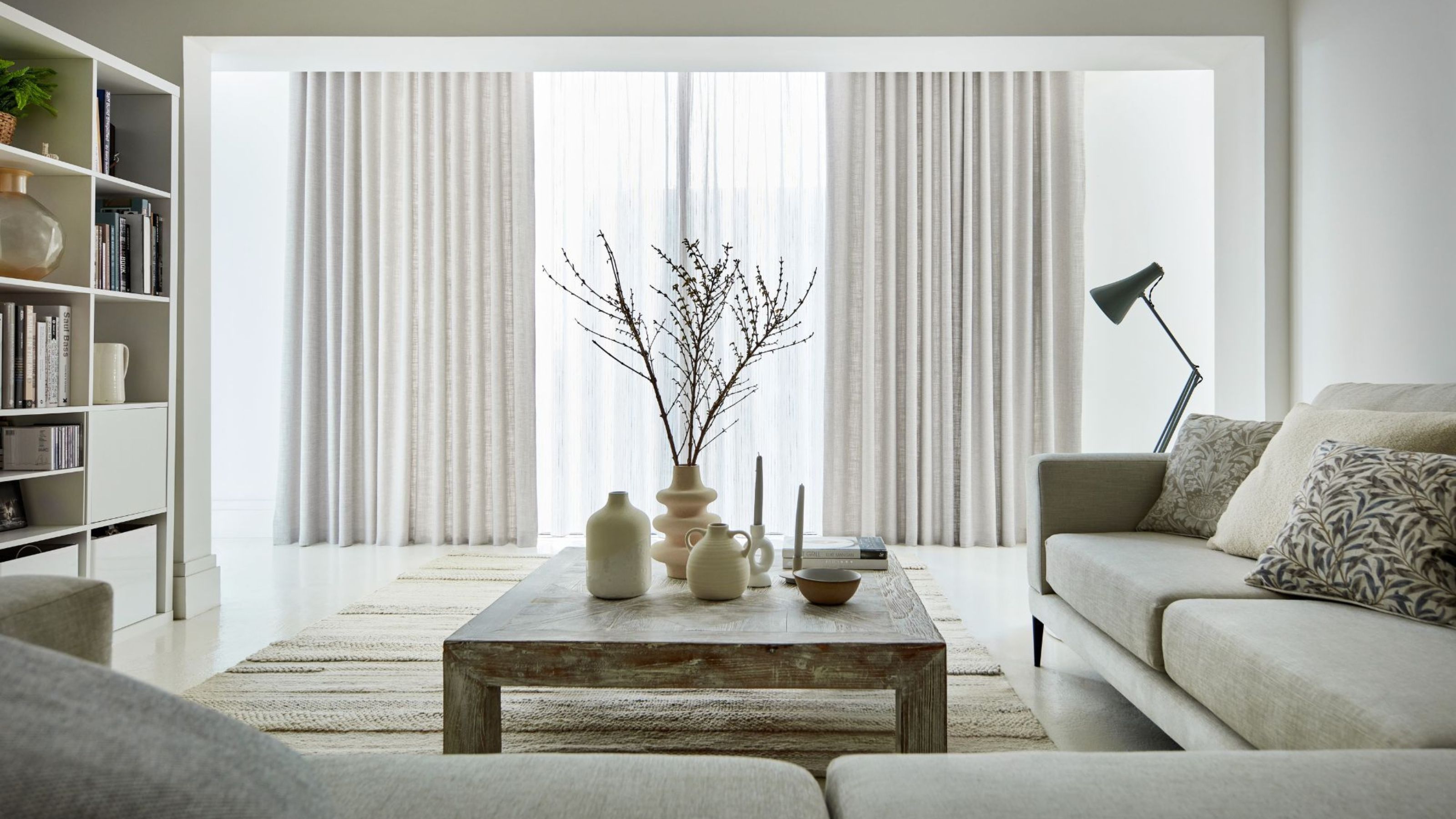
Choosing the best window treatments for sliding glass doors involves much deliberation. First and foremost, it must be practical to account for the footfall that flows through the space, but it's also an opportunity to let your design style shine — after all, you don't want to just cover the doors, you want to dress them.
The first consideration should be the functional purpose of these modern window treatments. Are you looking for a solution to limit the amount of direct sunlight your room receives? Or, are you looking for a way to add warmth? Once you know what your priorities are from the practical side of things, you can explore various options and get creative with interesting designs.
To help you on your way, we've rounded up our favorite window treatments for sliding glass doors, as shared by interior designers.
1. Go for a minimalist style with a recessed curtain
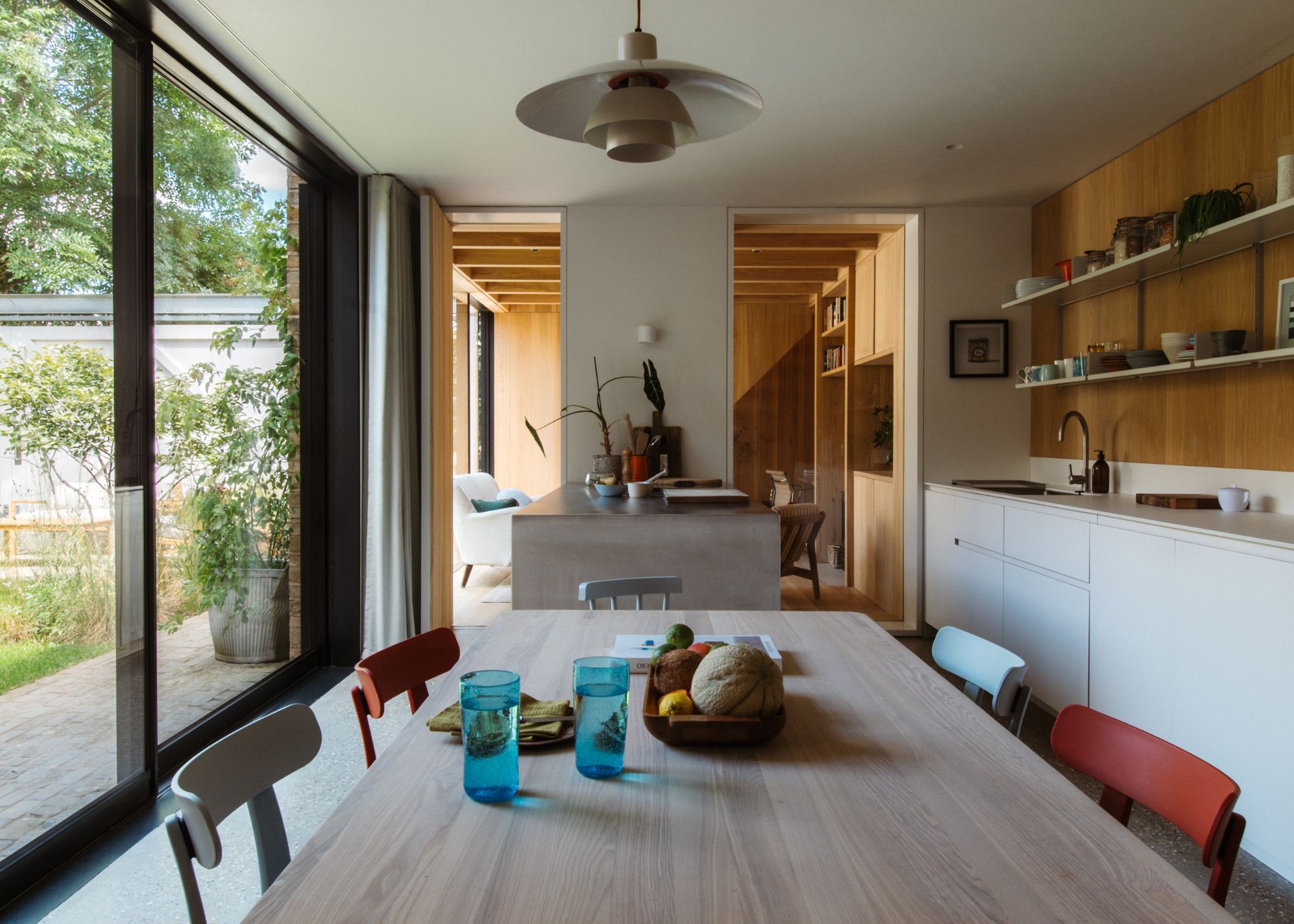
While the right window treatments for sliding glass doors depend on your specific needs, from shading the light to providing additional privacy, opting for a curtain that allows your window to remain uncluttered during the day will ensure a sleek look.
In this modern kitchen designed by Leo Wood of London-based Kinder Design, a recessed curtain track looks streamlined and allows the curtains to remain largely hidden during the day, while at nighttime, full privacy is offered.
"The curtains have been thoughtfully designed as a non-feature but still add a touch of warmth and softness, and keep out the black evenings when needed," Leo adds.
2. Create a timeless look with neutral colors
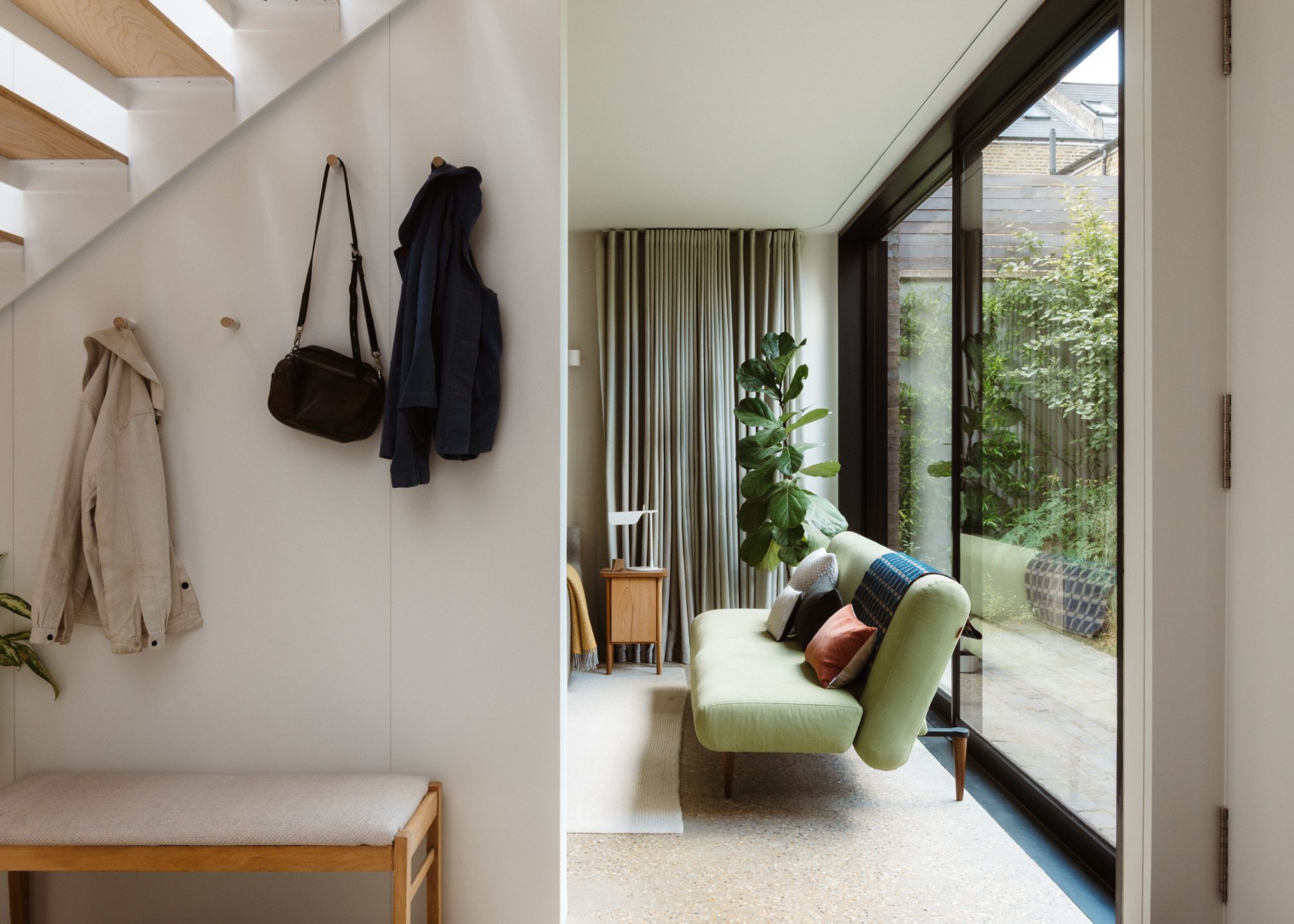
When tossing up the colors of your window treatments for sliding glass doors, keep in mind that neutral hues offer the most versatility and sense of timelessness. While the decor and colors in your room may change over the years (or seasons), going for a neutral-colored curtain is a safe bet if you want to ensure they won't date.
The Livingetc newsletters are your inside source for what’s shaping interiors now - and what’s next. Discover trend forecasts, smart style ideas, and curated shopping inspiration that brings design to life. Subscribe today and stay ahead of the curve.
In this modern living room, Leo Wood opted for a linen fabric in a warm, pale gray, which allows other elements in the space, such as the green sofa, to stand out.
"The aim with the curtains was to have a very minimal but warm curtain 'screen' that we can use on winter evenings, but which otherwise stacks back very unobtrusively," Leo explains.
For more help with choosing a color, take a look at this year's top curtain trends.

Leo Wood runs Kinder Design, a small interior design studio based in south-east London. Kinder specializes in creating calm yet characterful interior spaces for a range of residential and commercial clients. Sustainability, and the use of reclaimed materials and furniture, is often central to her designs, as is a considered use of color and texture.
3. Soften your space with curtains either side
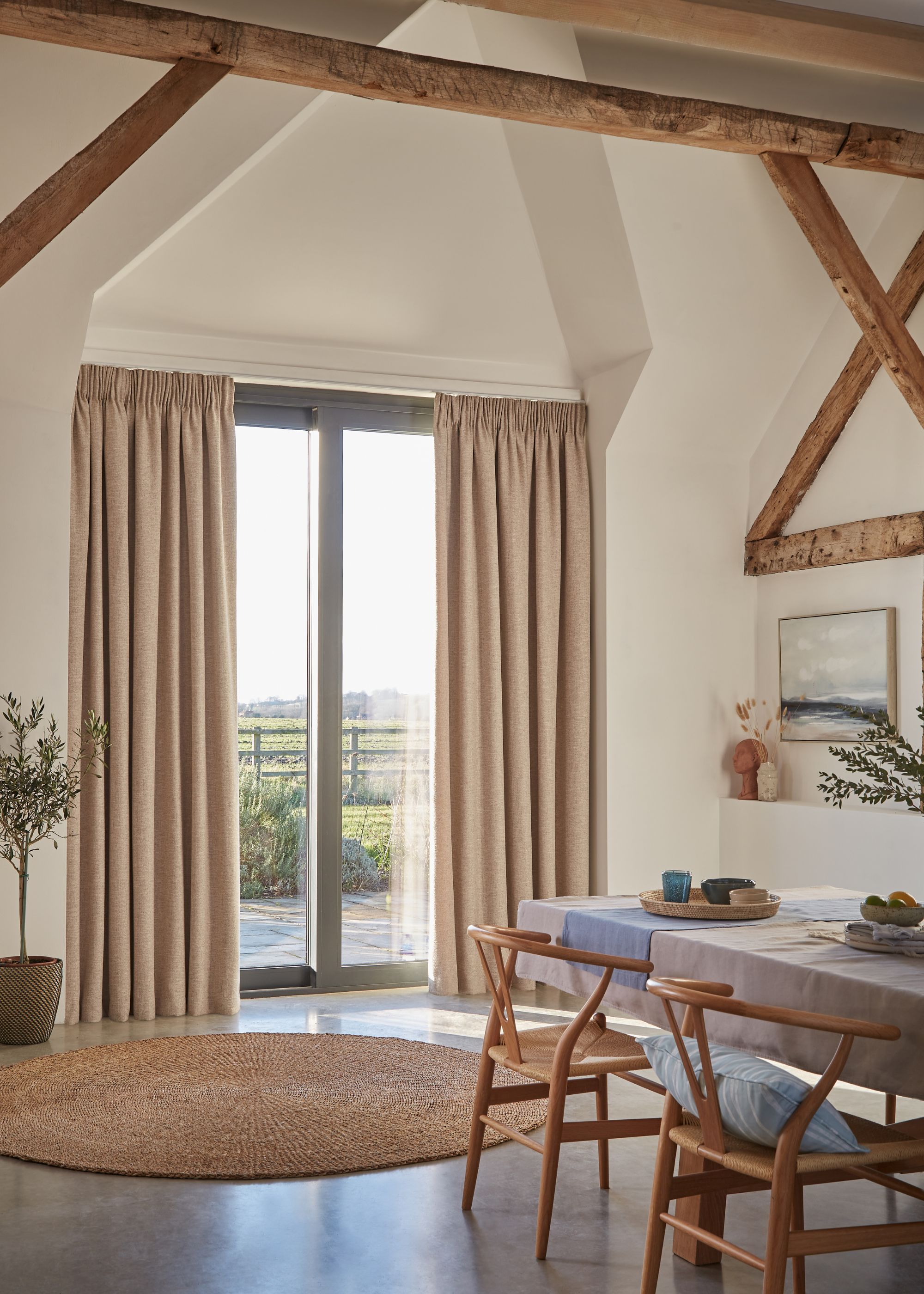
While sliding glass doors often feature curtains that can be pushed completely back on one side to allow an undisturbed view, sometimes a heavier split curtain on both sides can look better in the space.
"Curtains not only help retain heat during colder months but also add a layer of softness and texture to your living space," explains Yvonne Keal, senior product manager at Hillarys.
By covering the harder edges of the doors, this option (as seen above) adds softness and warmth, which can be an effective choice in large modern spaces that feel stark, such as open-plan kitchens.
4. Create privacy with roller blinds
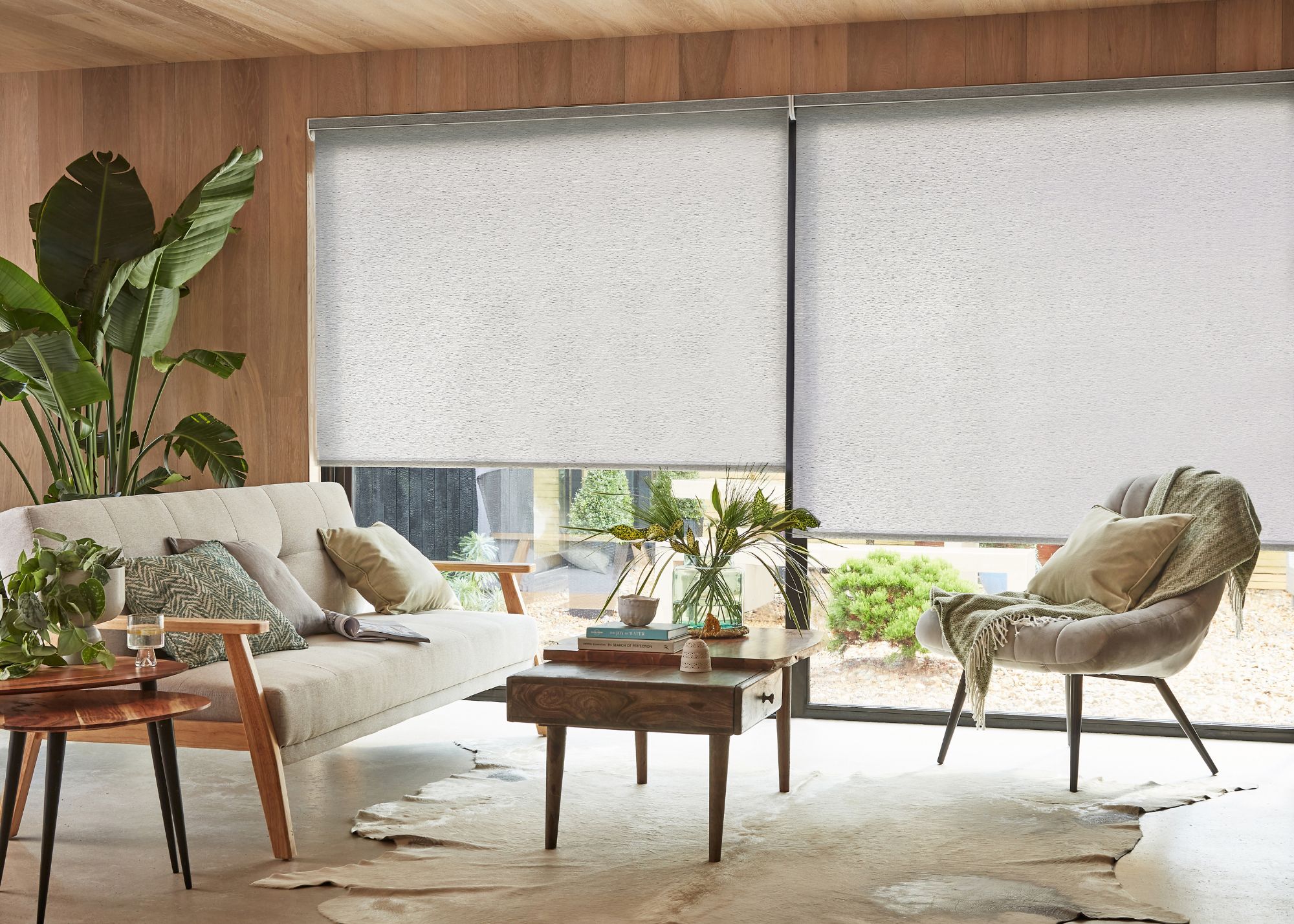
While curtains add warmth and texture as window treatments for sliding glass doors, there are plenty of types of blinds that also work well. Roller blinds, which can be adjusted throughout the day depending on how much privacy and sunlight you want, offer a sleek, uncluttered look that, when fully open, allows the outside view to take center stage.
"Roller blinds are incredibly versatile and budget-friendly," says Yvonne Keal. "They are unobtrusive, allowing you to make the most of your sliding doors while still providing necessary privacy. Plus, they can be made up to three meters wide, which is perfect for those fabulous wide sliding doors."
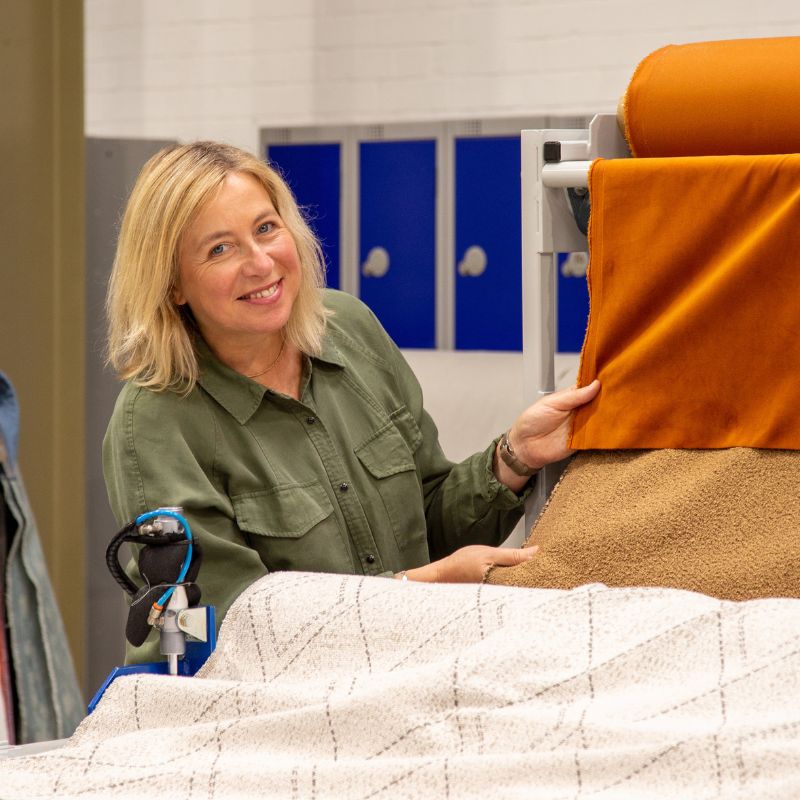
Yvonne is a product management specialist with over 20 years’ experience in the interiors industry. Since joining Hillarys in 2003, Yvonne has successfully launched many window dressing collections, including roller blinds, vertical blinds, Roman blinds, curtains, and voiles. Yvonne provides practical advice to help customers better understand which styles are best for their windows.
5. Choose functional vertical blinds
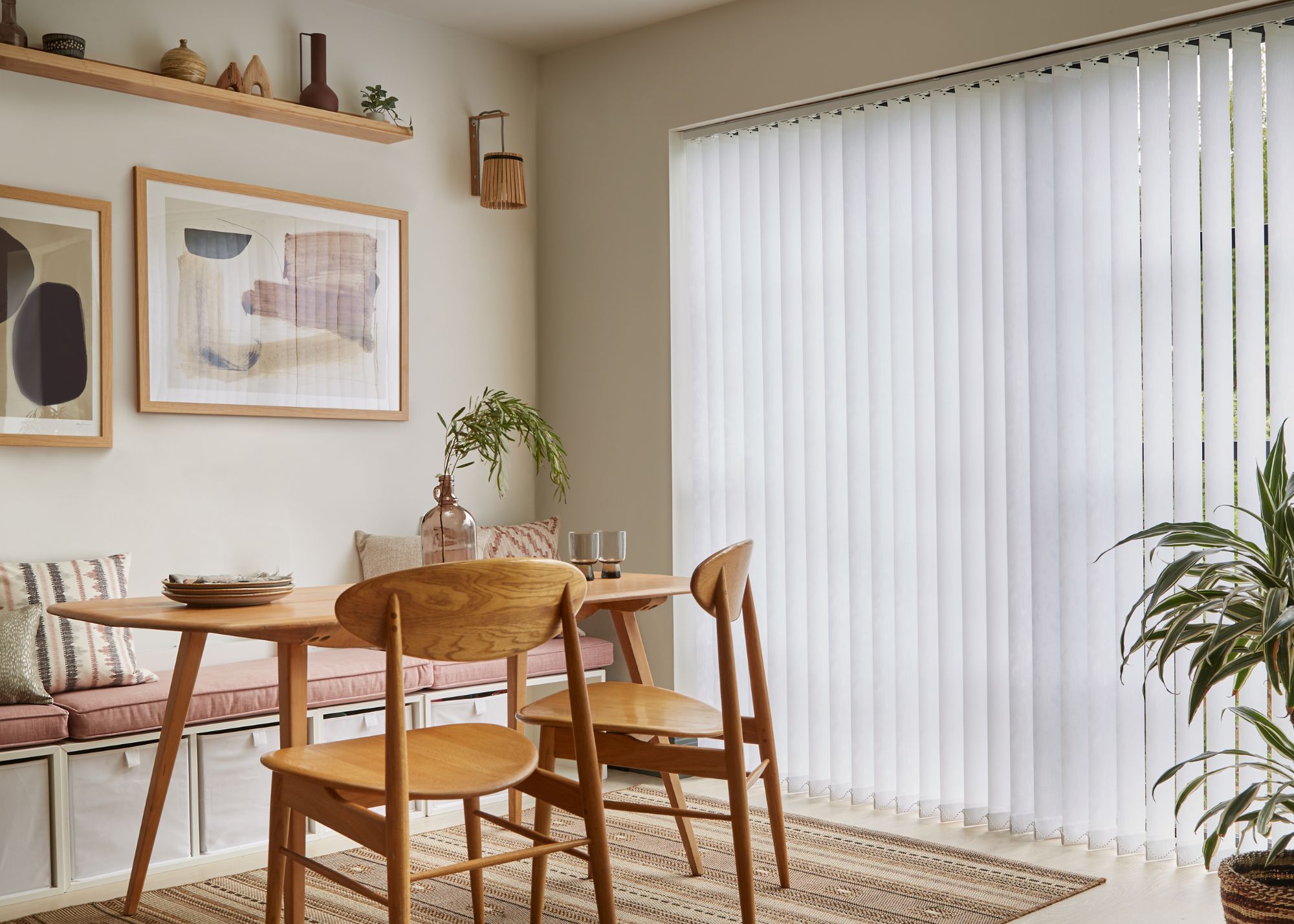
Similar to roller blinds, vertical blinds also allow you to control the amount of light that filters into your space throughout the day, while you can move them across the doors as needed.
"Vertical blinds are ideal if people are continuously walking in and out," Yvonne Keal adds. "They can be easily pushed to the side, providing seamless access. Additionally, they offer excellent light control, which is particularly beneficial for south-facing sliding doors to prevent overheating."
6. Diffuse the light with sheer curtains
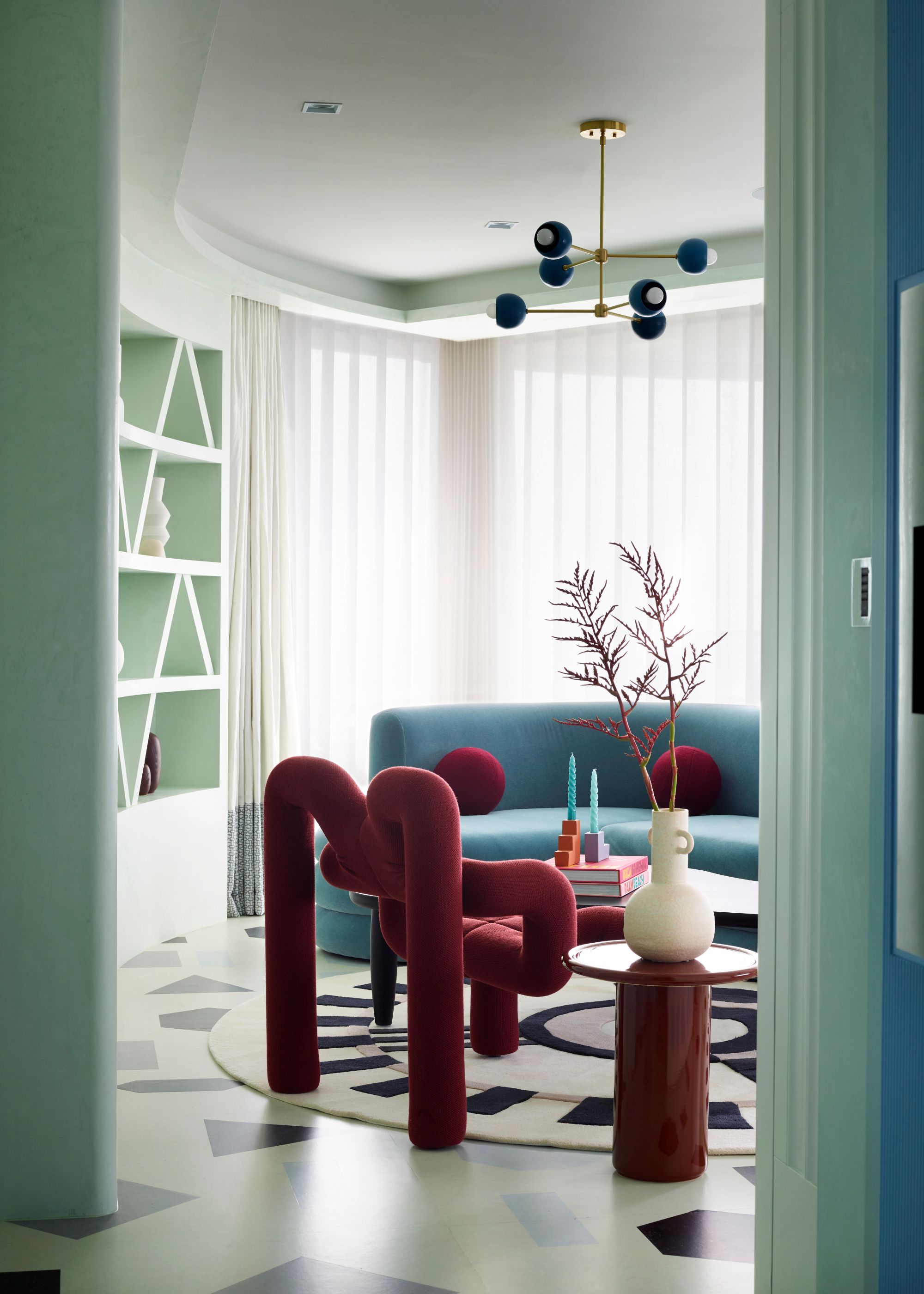
Another window treatment for sliding glass doors is privacy sheers, which allow diffused light, making them a good option for south-facing rooms or spaces that need more privacy throughout the day.
“Privacy sheers are a stylish and practical choice for sliding doors — they don’t completely block the view, but a simple twist of the control enables you to customize the levels of light and privacy within your home," explains Molly Brown, designer at Blinds 2go.
In this colorful living room by Owl Design, sheer curtains not only keep the space shaded but also add balance to the room's scheme. "The playful mix of sculptural furniture and bold color blocking is softened by full-height curtains," say designers Sophie van Winden and Simone Gordon. "Set on a discreet electric track system, they can be effortlessly controlled via smart switches — combining tactile texture with seamless functionality."
7. Layer sheer curtains with heavier curtains
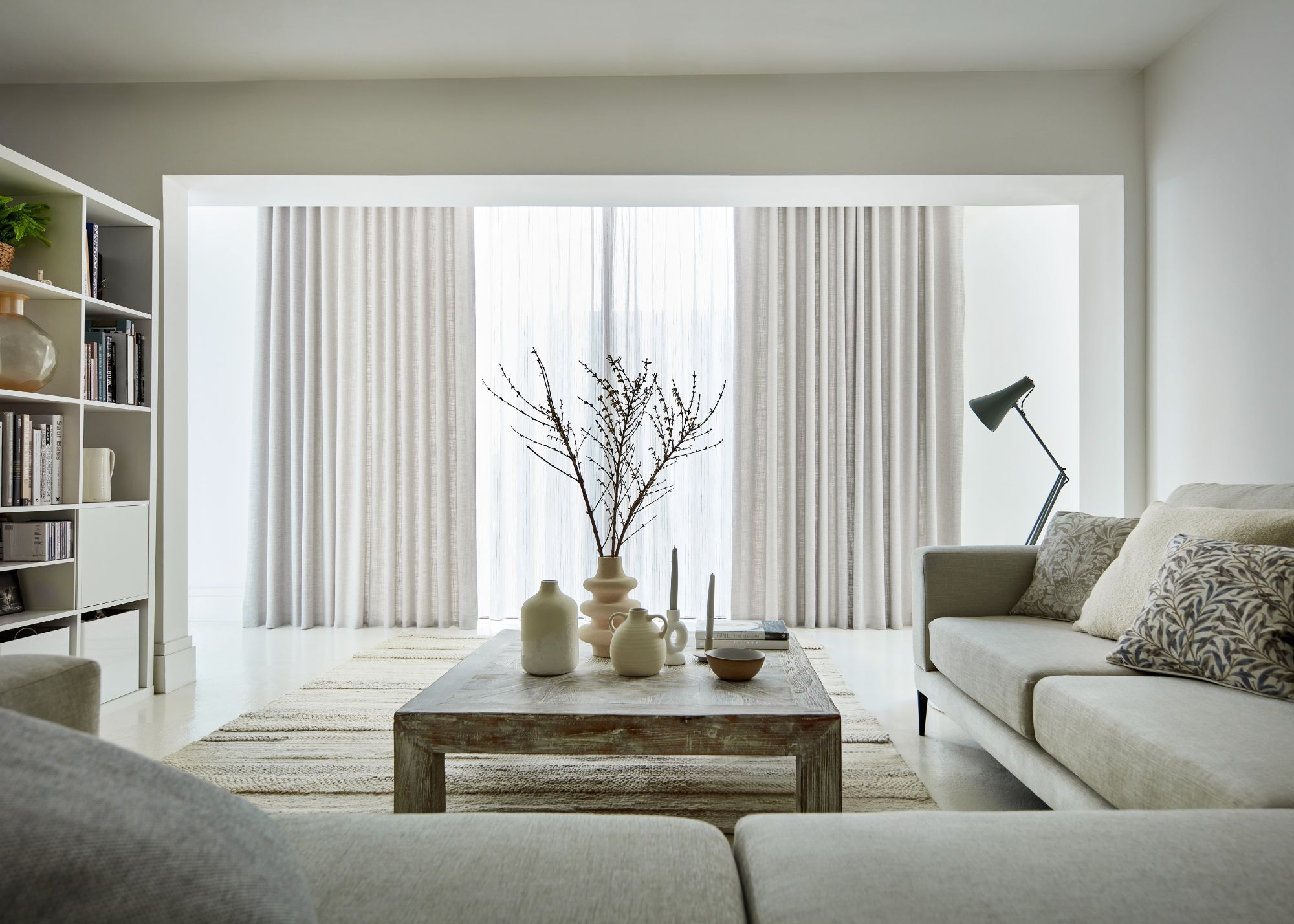
Doubling up curtain styles allows you to benefit from their functional purposes while offering more of a tactile quality. For example, layering sheers with blackout curtains, as seen above, create a layered look that softens the room, making it a great choice for spaces used to relax, such as cozy living rooms.
“Voile curtains are a great way to add to the aesthetic and add a touch of sophistication to a room," Molly Brown adds. "While they can help manage light levels and privacy to a degree — softening natural light and reducing visibility from the outside — the additional pair of curtains help elevate these, not only providing texture but giving more flexibility in terms of full light and privacy control, enabling you to play around with the ambiance you want.”
8. Create a rustic look with natural linen
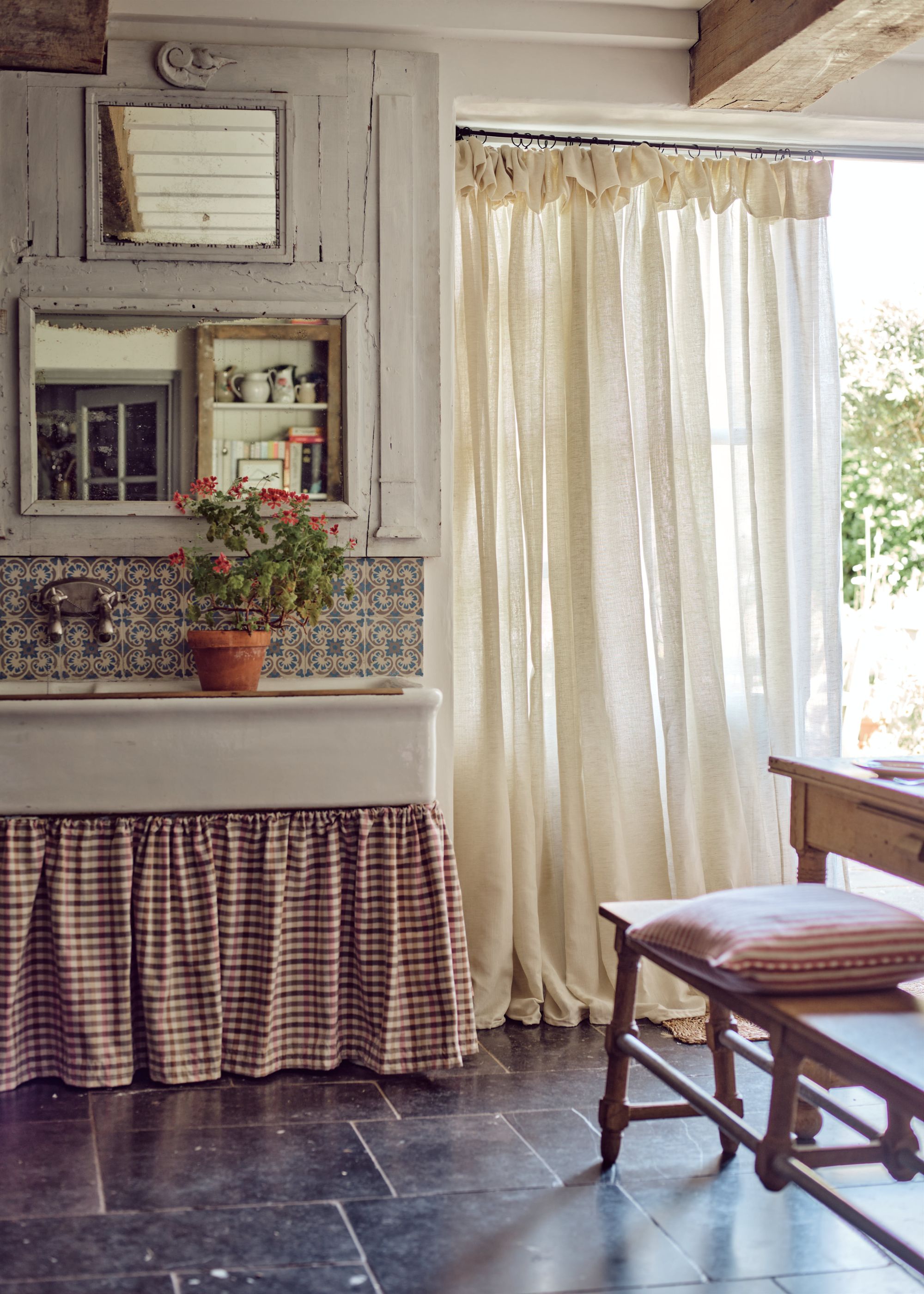
Linen is a wonderful choice of fabric if you want to achieve a lived-in look that nods to modern rustic decor. A light, relaxed linen will also allow some light to filter into your space, making it a wonderful choice for kitchens and dining rooms, especially during the summer months.
Textile designer Tori Murphy says that the curtains seen here are a "beautiful choice for sliding or folding doors as they allow light to pour in while offering the right amount of privacy."
"The soft, 100% natural lightweight wool and linen texture brings movement to the space and adds an airy feel, especially when paired with a flop over header or a simple pelmet that lends a neat, considered finish without feeling heavy or overworked," adds Tori.
9. Decorate with patterned window treatments
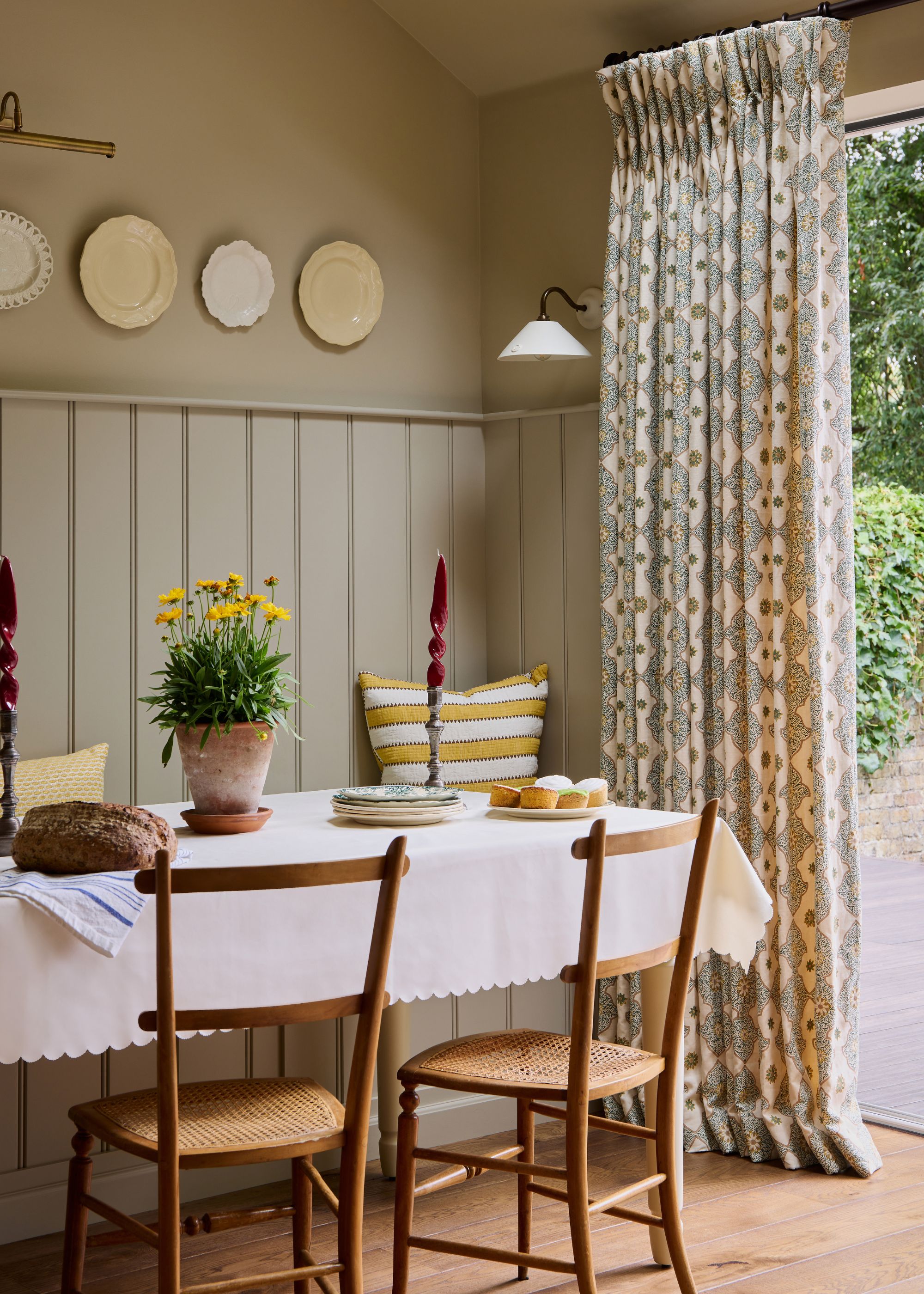
For a statement look, consider going for a patterned curtain for your sliding glass door. Not only do the latest pattern trends add visual interest to the room, but they can also serve as a way to soften the harsh lines of sliding glass doors.
This was the case for interior designer Uns Hobbs, who used patterned pinch pleat curtains to create balance over the sliding glass doors in the kitchen shown above.
"The fabric, a soft block print by Pukka Prints, brings a more organic feel to the space," Uns explains. "The natural pattern adds warmth and texture while creating a subtle link to the garden outside, helping to shift focus away from the modern doors and bring a more relaxed, layered feel to the kitchen."
10. Keep sliding glass doors clear from window treatments
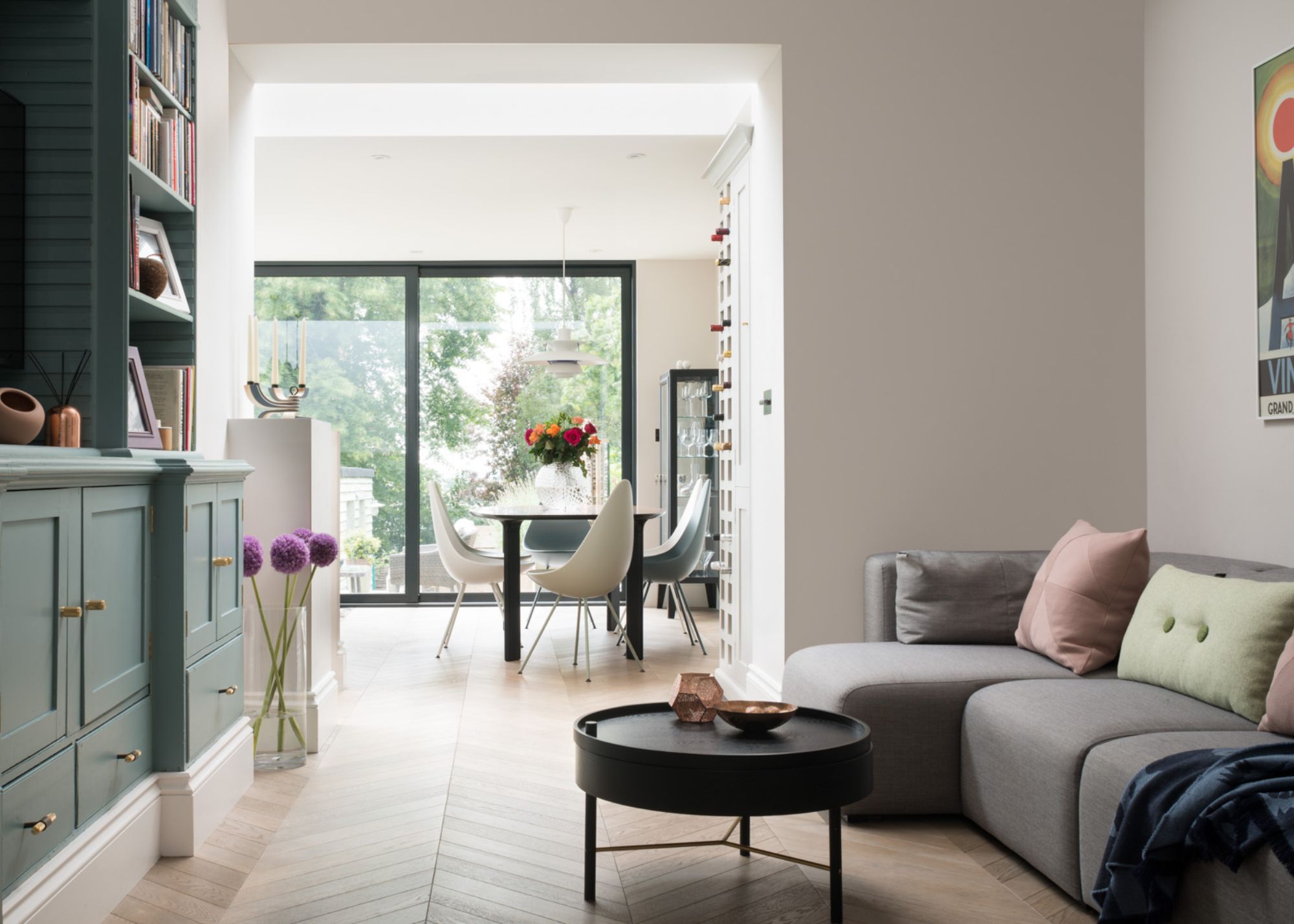
Sometimes, the best window treatment for sliding glass doors is no window treatment at all. Depending on the location of the room, its surroundings, and orientation, there are plenty of times when not to use window coverings actually makes the most sense.
This was the case for interior designer Samantha Watkins McRae, who kept the sliding doors in this open-plan kitchen and living room clear of curtains or blinds.
"The rear aspect with the sliding doors has the benefit of a wonderful view, privacy, and no one looking in, so a window treatment was not necessary," she explains. "This way, the owners have an uninterrupted view and a constant serotonin hit from the garden."
FAQs
What is the Best Window Treatment for a Sliding Glass Door?
The best window treatment for a sliding glass door depends not only on the practical benefits you need for your space but also on your design tastes. That said, Yvonne Keal of Hillarys recommends sheer voiles layered with curtains as a versatile choice, offering coziness and privacy.
"This combination allows you to enjoy natural light while maintaining privacy," she adds. "During the day, voiles filter sunlight beautifully, creating a warm glow, and at night, the heavier curtains add warmth and complete privacy."
However, blinds may be a more practical solution if you need to prioritize access throughout the day. "Vertical blinds are a smart choice," says Yvonne. "They slide easily to the side and offer excellent light control, especially for sunny, south-facing doors."
Are Blinds or Curtains Better for Sliding Glass Doors?
The choice between curtains vs blinds is all about the look you wish to create and how much privacy you would like. “If practicality is a key priority, blinds may be more suitable as styles such as panel blinds or vertical blinds can quickly and easily be adjusted to give varying amounts of light and privacy," explains Molly Brown of Blinds 2go.
“On the other hand, curtains can be a great way to play around with different styles and make your door more of a feature. They can still allow you to control visibility and light levels, especially if you mix different styles such as sheers and a thicker drape — plus it adds a nice level of dimension," Molly adds.
The right contemporary window treatments for sliding glass doors can help make your space more comfortable, aiding with light filtering and privacy control. Beyond the practicalities, it can also be used as an effective way to add softness to your room, while incorporating color and pattern for a bit of design flair.
If you're looking for more advice for other parts of your home, the best curtain ideas for large windows offer plenty of stylish inspiration.

Emily is a freelance interior design writer based in Scotland. Prior to going freelance in the spring of 2025, Emily was Homes & Gardens’ paint and color editor, covering all things color across interiors and home decor for the Homes & Gardens website. Having gained specific expertise in this area, Emily is well-versed in writing about the latest color trends and is passionate about helping homeowners understand the importance of color psychology in home design. Her own interior design style reflects the simplicity of mid-century design and she loves sourcing vintage furniture finds for her tenement flat.
